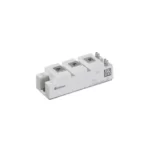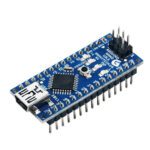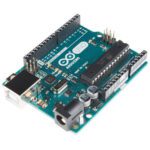
DEVELOPMENT BOARDS & PROTOTYPING
What is a development board and what are they used for?
Semiconductor suppliers support their microcontrollers with development boards, such as evaluation and demo boards. The intended use for these boards is so engineers can first become familiar with the target microcontroller, and second to assist in microcontroller hardware and firmware development.
(JHD161A)16×1 Character LCD Display Parallel 8-bit interface DC 5V for all devlopment board Green)
(JHD162A)16×2 Character LCD Display Parallel 8-bit interface DC 5V for all development board Green
1 Channel 5V Relay Module without Optocoupler
- Specification and Features :-
- 1 channel relay board
- Operating Voltage 5V
- Max Current : 20mA
- Relay Contact Current Capacity at AC250V: 10A
- Relay Contact Current Capacity at DC5V: 10A
- One normally closed contact and one normally open contact
- Triode drive, increasing relay coil
- High impedance controller pin
- Pull-down circuit for avoidance of malfunction
- Power supply indicator lamp
- Control indicator lamp
- Indicator for Relay output status
- Can Be controlled various appliances & other Equipment With Large current.
- Standard TTL Level logic controlled (AVR, Arduino, 8051, PIC, ARM)
- The module is compliant with international safety standards, control and load areas isolation trenches;
1 Pole Industrial Relay PCB Relays, Model Name/Number: GU-SS-112DFS, Voltage: 12VDC
12V 10A PCB Mount Sugar Cube Relay – SPDT
Applications:-
- Domestic control and switching
- Car control switching box
- HVAC
- Home Automation and Security system
- Motor Control System etc.
- Type: SPDT
- Coil Voltage Rating: 12V
- Current: 10A
- Contact capacity:
- Pin counts: 5
- Mounting Type: Through-hole
- Length: 18.5mm
- Width: 15mm
- Height: 15mm
- Weight: 10gm
16 x 2 Yellow/Green color DC 5V Character LCD display module
63D-12-1CE RELAY 12V 30A OEN
Arduino Nano V3
Description:-Arduino NANO Version 3 is the open source smallest Embedded Development board launched by Arduino based on Atmega328 SMD Package Microcontroller. It is a Surface mount Breadboard Friendly board integrated with Mini USB Port. DC Power Jack is not available on this Board, so power can be given through Mini USB Cable. It automatically sense and switch to the higher potential source of power, there is no need for the power select jumper.Specifications:-
- Microcontroller Atmel ATmega328 SMD Package
- Operating Voltage (logic level) 5 V
- Input Voltage (recommended) 7-12 V
- Input Voltage (limits) 6-20 V
- Digital I/O Pins 14 (of which 6 provide PWM output)
- Analog Input Pins 8
- DC Current per I/O Pin 40 mA
- Flash Memory 32 KB (of which 2KB used by bootloader)
- SRAM 2 KB
- EEPROM 1 KB
- Clock Speed 16 MHz
- Dimensions 0.70” x 1.70”
Arduino UNO R3 Development Board
The Arduino Uno R3 is a open source microcontroller board based on the ATmega328 chip. This Board has 14 digital input/output pins, 6 analog input pins, Onboard 16 MHz ceramic resonator, Port for USB connection, Onboard DC power jack, An ICSP header and a microcontroller reset button. It contains everything needed to support the microcontroller. Using the board is also very easy, simply connect it to a computer with a USB cable or power it with DC adapter or battery to get started.
* Product Images are shown for illustrative purposes only and may differ from actual product.
The Uno differs from all preceding boards in that it does not use the FTDI USB-to-serial driver chip. Instead, it features the Atmega16U2Atmega8U2 up to version R2) programmed as a USB-to-serial converter. While the Arduino UNO can be powered via the USB connection or with an external power supply, the power source is selected automatically.
External (non-USB) power can come either from an AC-to-DC adapter (wall-wart) or battery. The adapter can be connected by plugging a 2.1mm center-positive plug into the board's power jack. Also leads from a battery can be inserted in the Gnd and Vin pin headers of the Power connector. The board can operate on an external supply of 6 to 20 volts. If supplied with less than 7V, however, the 5V pin may supply less than five volts and the board may be unstable. If using more than 12V, the voltage regulator may overheat and damage the board. The recommended range is 5v to 12v for Arduino Uno.
Features:-
- Microcontroller: ATmega328P.
- Operating Voltage: 5V.
- Input Voltage: 7-12V.
- Digital I/O Pins: 14 (of which 6 provide PWM output).
- Analog Input Pins: 6.
- DC Current: 40mA.
- Flash Memory: 32 KB.
- SRAM: 2 KB.
- EEPROM: 1 KB.
- Clock Speed: 16 MHz.
Applications:-
- DIY project prototyping.
- Developing varied varieties of projects that require a code based control.
- Automation System development.
- Learning AVR programming.
- Entry level circuit designing.
Arduino UNO R3 Development Board
- ATmega328P with 16 MHz clock speed, 8-bit architecture, 32 KB flash memory, 2 KB SRAM, and 1 KB EEPROM.
- 14 pins for digital input/output operations
- 6 pins for reading analog signals with a 10-bit ADC
- 6 pins capable of Pulse Width Modulation for controlling LED brightness, motor speed, etc.
- USB Interface: For programming and power supply










 Resistors
Resistors
 Connectors
Connectors
 Capacitors
Capacitors
 Wires and Connectors
Wires and Connectors































